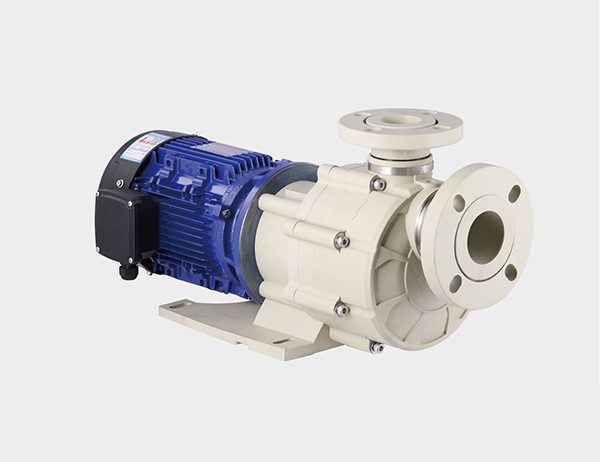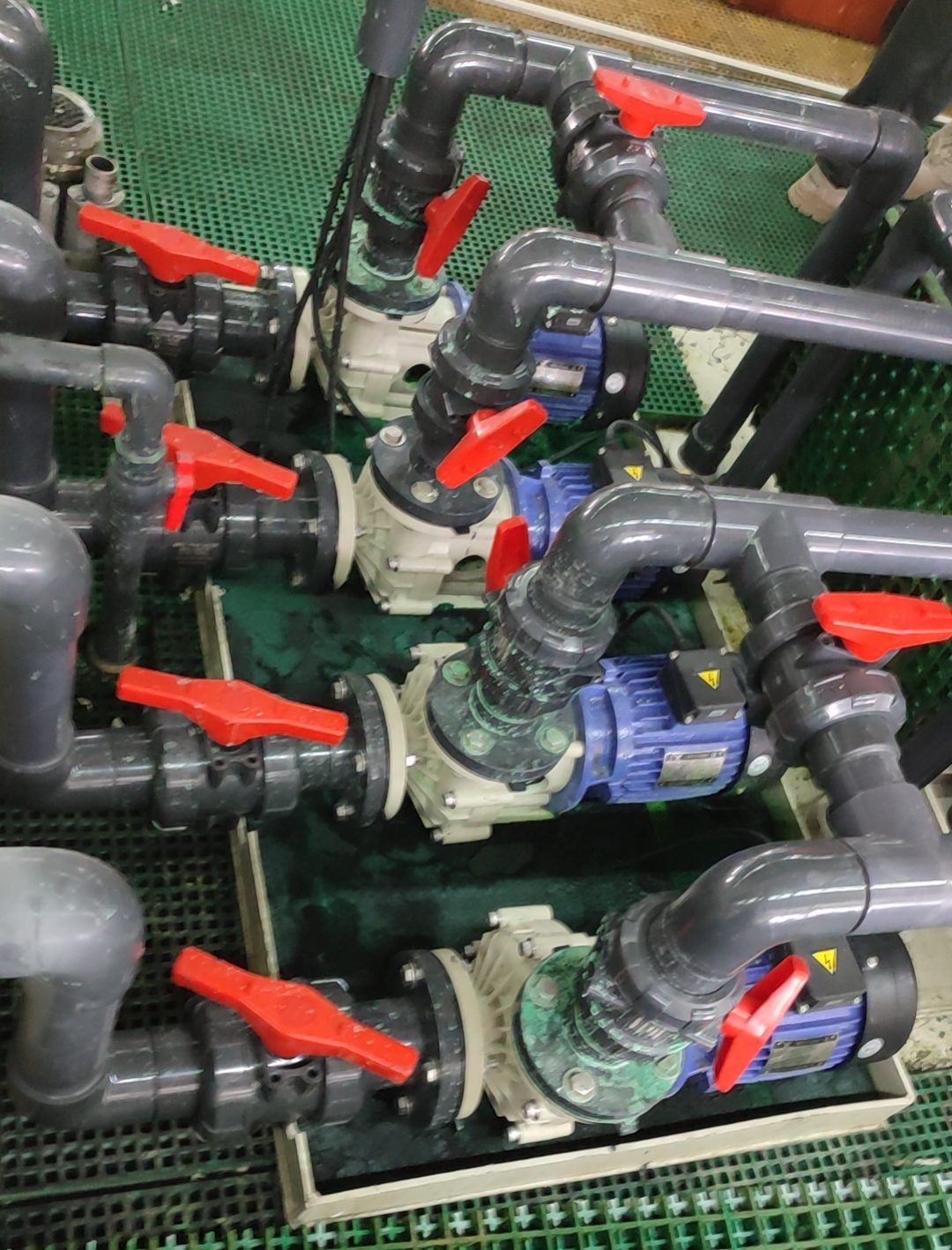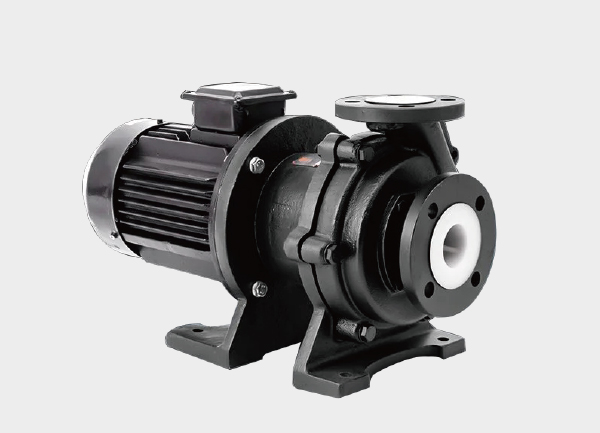To clearly distinguish between magnetic drive pumps, centrifugal pumps, horizontal pumps, vertical pumps, corrosion-resistant pumps, and chemical pumps, it’s essential to understand that these terms are not in a parallel relationship.
They define pumps from different dimensions — such as function, sealing method, installation structure, and application scenario.

For example:
Chemical pump is the general category.
Magnetic pump, centrifugal pump, and corrosion-resistant pump are subcategories under chemical pumps.
Horizontal and vertical pumps refer to installation structures.
Material selection applies across all types and is the key factor determining corrosion resistance and service life.
I. Clarifying Core Definitions and Relationships
| Concept | Classification Dimension | Core Definition | Key Characteristics |
|---|---|---|---|
| Chemical Pump | Application (general category) | A general term for pumps designed to transfer chemical media (acid, alkali, solvents, flammable, explosive, or toxic fluids). | Must handle high corrosion, temperature, and safety requirements; includes magnetic, centrifugal, and corrosion-resistant pumps. |
| Centrifugal Pump | Working Principle | Uses high-speed impeller rotation to generate centrifugal force and move fluid; most common chemical pump type. | High flow rate, simple design, low cost; requires shaft seal (mechanical/packing), potential leakage risk; not ideal for viscous or particle-laden fluids. |
| Magnetic Drive Pump | Sealing Method | A sealless variant of the centrifugal pump that transfers torque through magnetic coupling—no shaft penetration, fully leak-free. | Zero leakage; more complex and costly; unsuitable for viscous or particle-containing fluids (risk of magnetic coupling damage). |
| Corrosion-Resistant Pump | Functional Property | Focuses on material resistance to corrosion; can be centrifugal, magnetic, or other structures. | Pump body and parts made of corrosion-resistant materials (316L, fluoroplastics, Hastelloy, etc.); suitable for aggressive chemical media. |
| Horizontal Pump | Installation Structure | Shaft positioned horizontally; pump mounted on a baseplate. | Easy maintenance (no need to remove piping), stable operation; requires larger footprint; suitable for large-flow, high-head applications. |
| Vertical Pump | Installation Structure | Shaft positioned vertically; pump can be submerged (e.g., sump pump) or floor-mounted. | Space-saving; maintenance more difficult; ideal for narrow areas or tank transfer. |
| Material | Adaptation Factor | Determines corrosion resistance and service life; must match the medium. | Divided into metallic (304, 316L, Hastelloy) and non-metallic (fluoroplastics, ceramics); directly affects safety and cost. |
II. Core Comparisons: Three Key Dimensions
1. Sealing Method — Magnetic Pump vs. Conventional Centrifugal Pump
| Comparison Item | Magnetic Drive Pump (Sealless Centrifugal) | Conventional Centrifugal Pump (With Seal) |
|---|---|---|
| Sealing Principle | Shaftless magnetic coupling—fully enclosed | Mechanical/packing seal—contact sealing surfaces |
| Leakage Risk | Zero leakage — ideal for toxic, flammable, or valuable media | Minor leakage (mechanical <5mL/h; packing slightly higher) |
| Fluid Limitation | Low-viscosity (<50 cP), clean fluids only | Can handle slight solids or viscous media with wear-resistant seals |
| Cost & Maintenance | 30–50% higher cost, minimal maintenance (no shaft seal wear) | Lower cost, requires regular seal replacement (every 1–2 years) |
| Typical Application | Toxic, flammable, valuable fluids (e.g., cyanides, methanol, liquid crystal materials) | Moderate-risk fluids (e.g., dilute acids, general solvents) |
2. Installation Structure — Horizontal vs. Vertical Pump
These refer to form factors, not pump types; either can apply to centrifugal, magnetic, or corrosion-resistant pumps.
| Comparison Item | Horizontal Pump | Vertical Pump |
|---|---|---|
| Space Requirement | Larger footprint; ideal for open areas | Compact; ideal for confined or tank-side setups |
| Maintenance | Easy (no need to remove piping) | More complex (requires disassembly or lifting) |
| Stability | Low center of gravity—stable at high head (>50 m) | Higher center of gravity—best for low head (<30 m) |
| Typical Configuration | Horizontal corrosion-resistant centrifugal or magnetic pumps | Vertical immersion or corrosion-resistant pumps for tanks |
3. Functional Focus — Standard Chemical Pump vs. Corrosion-Resistant Pump
| Comparison Item | Standard Chemical Pump | Corrosion-Resistant Pump |
|---|---|---|
| Materials | Typically 304 stainless steel or cast iron | Corrosion-resistant materials (316L, fluoroplastics, Hastelloy, ceramics) |
| Medium Compatibility | Weakly corrosive or neutral fluids (dilute alkali, water, oil) | Medium to highly corrosive fluids (strong acids, halides, fluorides) |
| Typical Applications | Cooling water, lubrication, general transfer | Pickling, electroplating wastewater, fine chemicals |
| Cost & Service Life | 20–40% cheaper; shorter service life (1–2 years) | Higher cost; longer life (3–5 years) |
III. Core Foundation: Material Selection
Material determines service life and safety — it must always match the fluid’s chemical properties.
| Material Type | Common Materials | Corrosion Resistance | Example Media | Typical Pump Type |
|---|---|---|---|---|
| Metallic | 304 Stainless Steel | Weak corrosion | Dilute acid (<10%), neutral water | Standard horizontal/vertical centrifugal pump |
| 316L Stainless Steel | Medium corrosion | Nitric acid, phosphoric acid, seawater | Corrosion-resistant centrifugal or magnetic pumps | |
| Hastelloy C276 | Severe corrosion | Concentrated acids, chloride, hot organic acid | High-end magnetic drive pumps | |
| Non-metallic | Fluoroplastics (PVDF/F46) | Extreme corrosion resistance | Hydrochloric acid, HF, aqua regia, oxidizers | Fluoroplastic magnetic or vertical corrosion-resistant pumps |
| Ceramics (SiC) | Corrosion + abrasion resistance | Acidic slurry, sandy wastewater | Abrasion-resistant centrifugal pumps |
Common Mistakes:
Using 304 stainless steel for seawater or acetic acid — rapid pitting due to lack of molybdenum.
Using metal for hydrofluoric acid — must use fluoroplastic or ceramic.
Using carbon steel for magnetic pumps — unsafe; at least 304 stainless steel required.
IV. Practical Selection Steps
Step 1: Define Core Requirements
Is zero leakage required?
– Yes (toxic, flammable, valuable media) → Magnetic drive pump
– No (general chemicals) → Centrifugal pumpIs installation space limited?
– Limited → Vertical pump
– Sufficient space, frequent maintenance → Horizontal pump
Step 2: Match Pump Type
| Application Scenario | Recommended Pump Type | Material Suggestion |
|---|---|---|
| Toxic / zero-leakage + open space | Horizontal magnetic pump | 316L / fluoroplastic |
| Strong acid / limited space | Vertical fluoroplastic centrifugal pump | PVDF |
| Large flow (>100 m³/h), mild corrosion | Horizontal 304 centrifugal pump | 304 SS |
| Tank suction (low head), corrosive | Vertical immersion corrosion-resistant pump | 316L / ceramic |
| Corrosive wastewater with solids | Horizontal abrasion-resistant corrosion pump | SiC / 316L + coating |
Step 3: Confirm Operating Parameters
Flow rate: add 10–20% margin (e.g., 50 m³/h → select 60 m³/h).
Head: total = lift height + pipeline loss + 20% safety margin.
Temperature: ensure material temperature tolerance (e.g., fluoroplastic ≤120°C; Hastelloy ≤400°C).
V. Summary: Key Selection Guidelines
Step 1: Check medium safety — Toxic/flam. → Magnetic pump; General chemicals → Centrifugal pump.
Step 2: Check space — Limited → Vertical; Ample & maintainable → Horizontal.
Step 3: Select material — Mild corrosion → 304; Medium → 316L; Strong → Fluoroplastic/Hastelloy.
Step 4: Add performance margin — +10–20% for flow/head to ensure stable operation.






